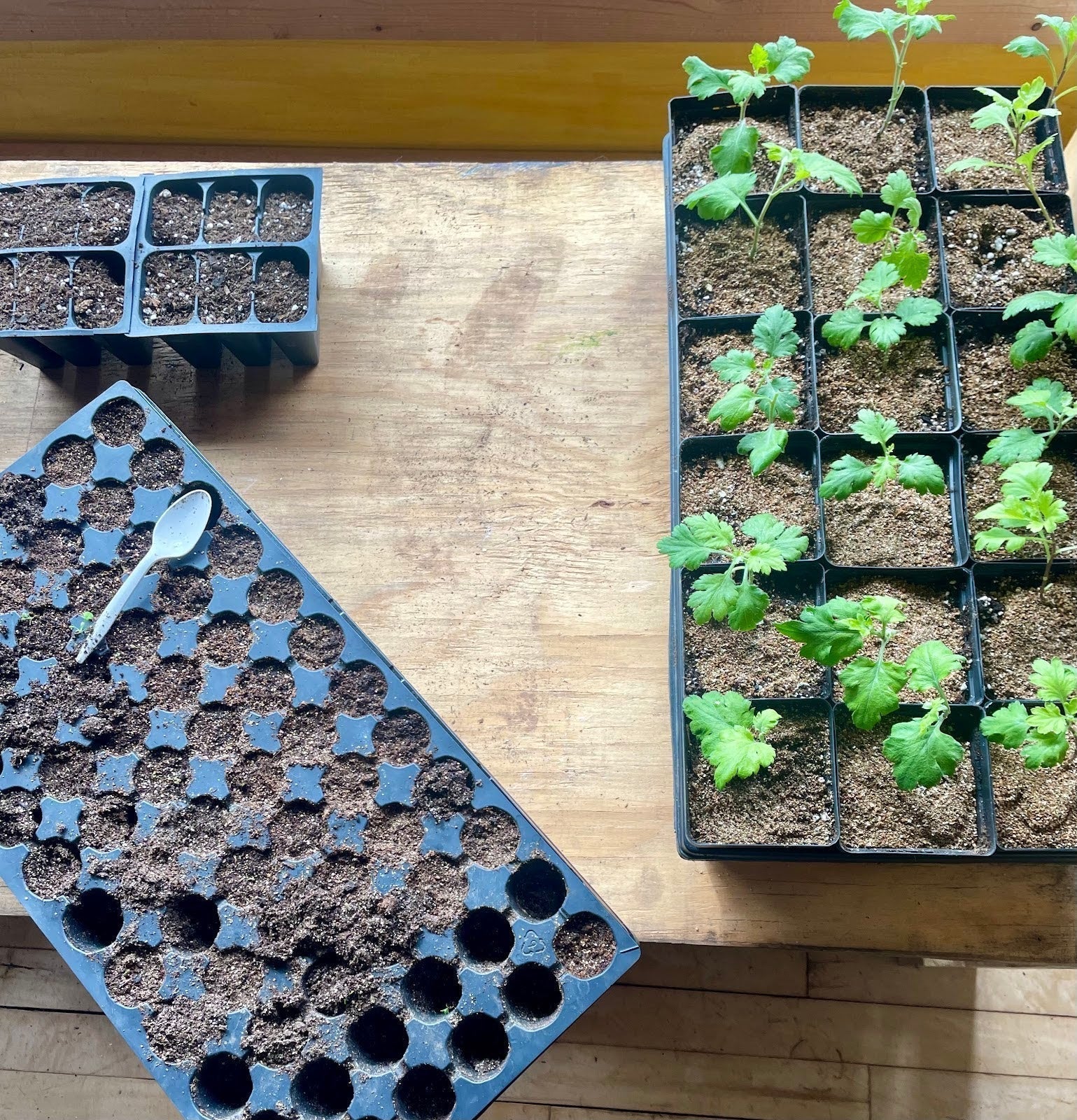
Spring has been flirting with us recently, tantalizing warm, still days and melted sidewalks. The snow melts atop south facing earth and the ground softens a little. Technically it’s still deep winter in northern Minnesota, equatorial spring isn’t far off, but a far cry from anything resembling conventional spring. This morning thick snowflakes fall gently, reminding us of winter's hold on our part of the world.
But look closely, there’s change afoot. The pine siskins have arrived in cheerful noisy flocks. They forage in the old spruces and lilacs in the backyard. They seem eager to get things moving towards spring. I noticed them all at once when I stepped out a few days ago. Many people head to warm locations these days as winter stretches on. But it’s happening, slowly the pulse of spring starts to beat. Salix alba, the golden willow, is aflame with bright yellow twigs. While the young stems have been a yellow hue all winter, they seem to radiantly glow in spring with impending growth of early spring catkins. Salix discolor, the pussy willow, stands out now too with their furry catkins. They fade into the background soon after. This is the first time I’ve noticed each clump is a different color. Shades of brown and brick red. Remarkably easy to propagate from cuttings, I try to find different colors as I snip the twigs.
The dark eyed juncos will soon arrive, and waxwings will show up in droves, cleaning up last year’s frozen fruit off mountain ash and apple trees, making room for spring blossoms.
The days grow longer. While most are tired of the long winter season, my mind is bustling. I spent January and February mapping out my flower bed space and calculating my seed starting calendar. My window is filling up with newly seeded flats and chrysanthemum cuttings. Ranunculus poke up through the potting mix and little green leaves, shaped like hands, wave hello. Every day I mist the flats and look for signs of germination. I pause over the tray of lavender.
Several years ago, I noticed a patch of lavender happily growing in a roadside garden on a side street in town. Lavender is not normally very hardy in zone 4a. The woman who planted it here tore up the grass in the boulevard, between the sidewalk and the street. She planted the strip full of many different kinds of flowering plants. Over the years I’ve watched the lavender grow, spread, and thrive despite its harsh location just inches from the road. Snow, salt and sand pile on all winter and the freeze/thaw cycles of spring threaten tender growth and root systems. Yet, the lavender growing here persists, year after year. Right around now, just as the snowbank is starting to retreat, I stop and collect a handful of dried flower heads. The aromatic oils are still pungent in the dried material. Once home (with gloves), I crush the flower heads and grind them across screens to allow the little black seeds fall through. The seeds go into damp paper towels, in plastic bags and into the fridge for two weeks, to mimic real spring. They usually start germinating before the two weeks are up. With every seedling that appears I am in marvel at this tough patch of lavender that keeps on going through harsh winter after baking summer, along the roadside, freely flowering and making new seed, year after year.
I have always felt a greater sense of kinship and familiarity with the plants I start from seed. To witness the whole process, from germination, to flowering, to seed set, is to be present for life itself. It can begin the process of getting to know the natural world around you. Of being called to make observations. Acquainting yourself with seedlings and recognizing them in the garden against weeds. And looking up once and awhile to hear the story on the wind- the arrival of the birds, the thinning of the air to give way to a new season ahead.





